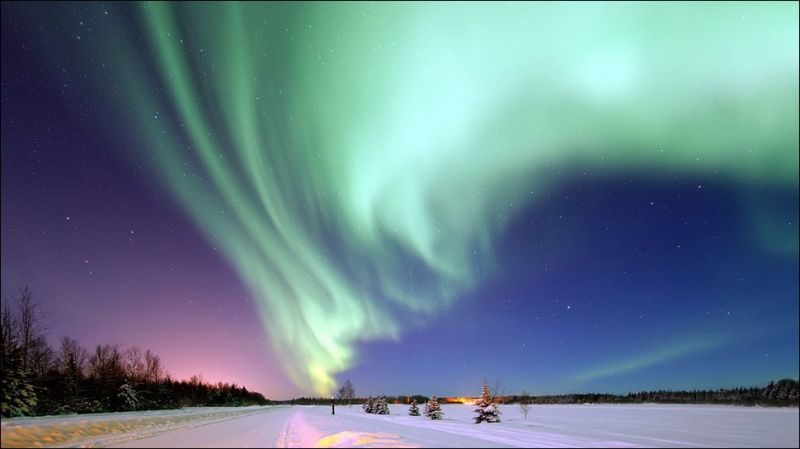New Delhi: The cause of the colorful Northern Lights has long been hypothesized and researchers had never observed the underlying mechanism directly until now.
For the first time, scientists have directly observed the shower of electrons bouncing across Earth’s magnetic field, which causes the spectacular, colorful auroras.
The spectacle of these subatomic showers is legendary. Green, red, and purple waltz across the night sky, blending into one another for a fantastic show widely considered one of the great wonders of the world.
For the unversed, Aurora Borealis (Northern Lights) is a stunning light show, caused when electrically charged particles released from the Sun enters the Earth’s atmosphere and collide with gases such as oxygen and nitrogen.
This sight is seen around the magnetic poles of the northern and southern hemispheres.
Among a variety of auroras, pulsating auroral patches appearing at dawn are common but the physical mechanisms driving this auroral pulsation had so far not been verified through observation.
With the advent of a new satellite with advanced measuring tools, researchers have now identified that this wonder is caused by the hard-to-detect interaction between electrons and plasma waves.
This interaction takes place in the Earth’s magnetosphere, the region surrounding the Earth in which the behaviors of the electric particles is usually governed by the planet’s magnetic field.
“Auroral substorms are caused by global reconfiguration in the magnetosphere, which releases stored solar wind energy,” said Satoshi Kasahara, associate professor at the University of Tokyo in Japan.
“They are characterized by auroral brightening from dusk to midnight, followed by violent motions of distinct auroral arcs that eventually break up, and emerge as diffuse, pulsating auroral patches at dawn,” said Kasahara, lead author of the study published in the journal Nature.
The global reconfiguration often drives a specific type of plasma waves called chorus waves, to rain electrons into the upper atmosphere.
This stabilizes the system and gives off a colorful light as the electrons fall. However, scientists have questioned if the chorus waves were powerful enough to excite electrons to the extent of creating auroras.
“We, for the first time, directly observed scattering of electrons by chorus waves generating particle precipitation into the Earth’s atmosphere,” Kasahara said.
“The precipitating electron flux was sufficiently intense to generate pulsating aurora,” he said.
Scientists could not see this direct evidence of electron scattering before because typical electron sensors cannot distinguish the precipitating electrons from others.
Researchers designed a specialized electron sensor that observed the precise interactions of auroral electrons driven by chorus waves.
The sensor was aboard the Exploration of energization and Radiation in Geospace (ERG) satellite, also known as the Arase spacecraft, launched by the Japan Aerospace Exploration Agency.
“By analyzing data collected by the ERG spacecraft more comprehensively, we will reveal the variability and further details of plasma physics and resulting atmospheric phenomena, such as auroras,” Kasahara said.
PTI

